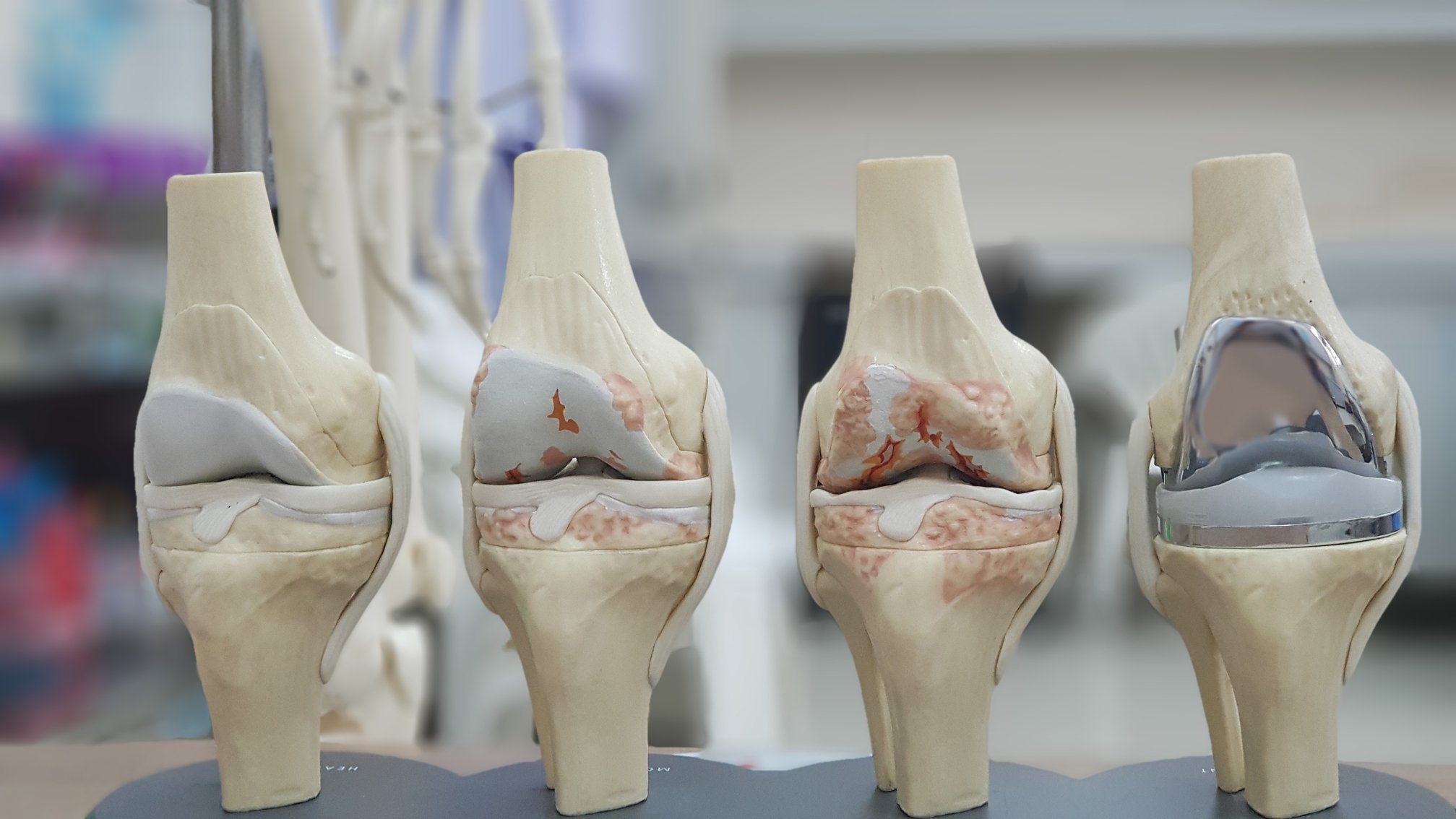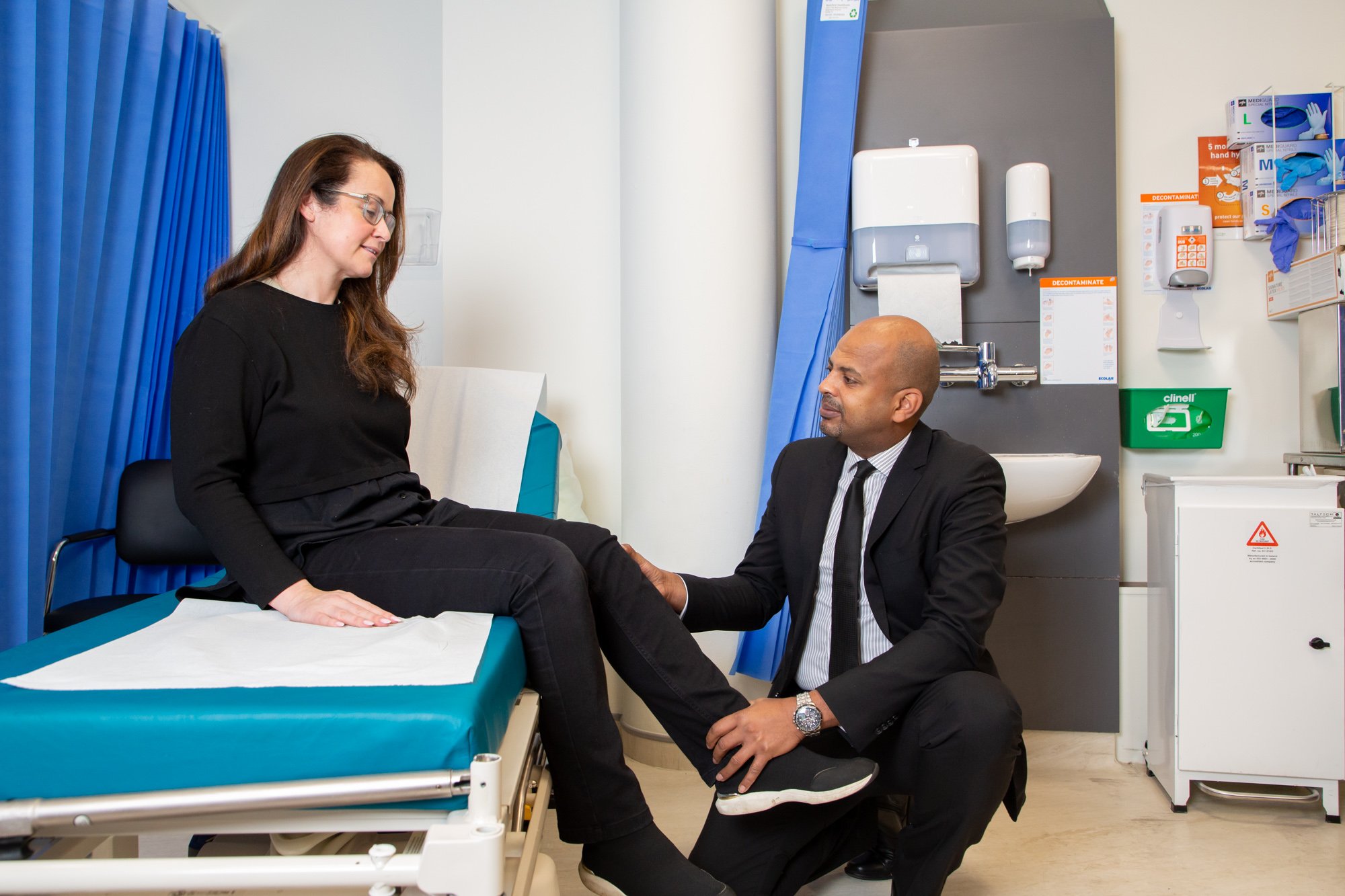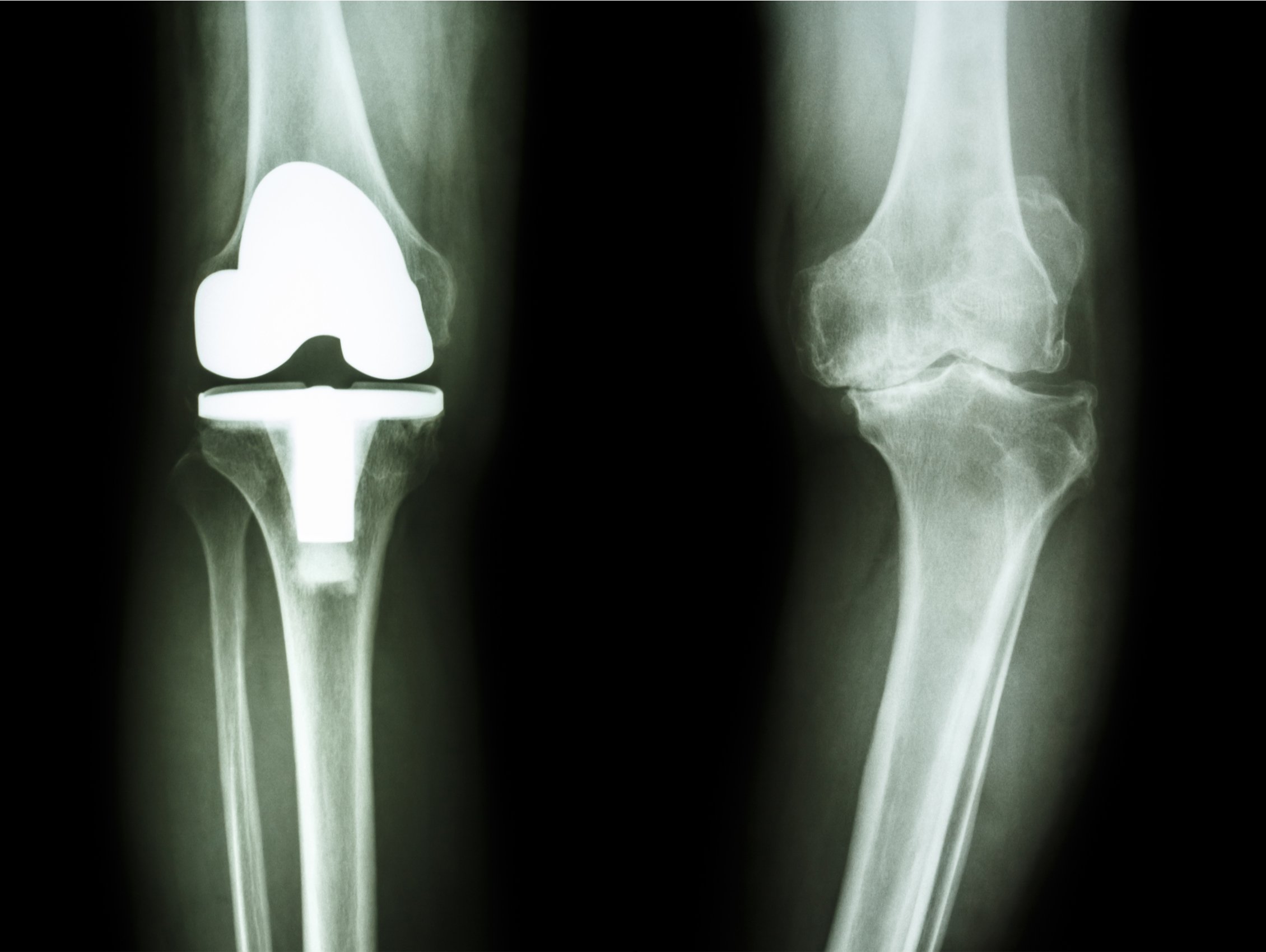
Knee Replacement
Do I Need a Knee Replacement?
Knee replacement surgery or arthroplasty is a standard operation in which the damaged or worn knee is replaced with an artificial joint. Although adults of all ages could need a knee replacement, surgery is most often required in people aged 60 to 80.
With age, the articular cartilage - the tissue covering the bone in the joint - wears out due to excessive use. The condition is called arthritis. Some patients may have inflammatory arthritis, while others may develop the condition after a fracture in their knee.
Patients require knee surgery when their mobility is limited or reduced and they're in pain even when resting. Early treatment includes physiotherapy, injection therapy, and pain relief medication.
But if these interventions aren't proving to be effective or the condition has become unbearably painful to a point where it impacts the patient's quality of time, knee replacement becomes necessary.
For those looking to schedule knee replacement surgery for themselves, the website https://www.orthopaedicsurgery.ie will explain every aspect of the procedure. Starting from prior preparation to rehabilitation and long-term care, many factors influence the benefit you get from your newly replaced knee.
What Is a Knee Replacement
Made From?
Today, there are several knee replacement implants on the market. The design and brand you need will be determined by your doctor based on different factors, such as your knee problem, the doctor's familiarity with the implant, and the cost of the implant.
All implant materials must follow specific criteria. For example, they must be biocompatible, which means the body should accept them. They should also have weight-bearing abilities and retain their shape and strength for a long time.
In the knee replacement procedure, the surgeon makes a vertical incision of 10cm long at the frontal side of the knee. The surgeon then removes the joint surfaces from the shinbone and the thigh bone. In some instances, they also remove the undersurface of the knee cap.
Finally, they implant the new knee into place. The implant contains a metal shell with a plastic liner in the middle.
Depending on your condition, the surgeon may use a special coating or bone cement to secure the knee replacement implant in place.
Most implants are made of titanium alloy or another type of metal. The plastic liner that connects the two metal pieces is composed of polyethene. Overall, the process is minimally invasive and often Robotic & Computer navigated for maximum efficiency.
Complications of Knee Replacement Surgery
- Frequent (10%)
- Common (2-5%)
- Infrequent (1-2%)
- Rare (<1%)
- Urinary Tract Infections
- Pain
Can occur frequently following surgery. It is important to drink loads of water following surgery to try to prevent this. If you notice any buring or stinging tell your healthcare team.
Your knee will be sore following surgery and particularly once the spinal anesthetic wears off. It is very important to keep pain under control by taking the prescribed pain medication, using ice and elevating the leg. By controlling pain this enables you to progress with physiotherapy and your rehabiliitation.
- Blood Clots - Deep Vein Thrombosis
- Bleeding
- Nerve Injury
- Difficulty passing urine
- Loosening of the knee
- Stiffness in the knee
Mobilising following surgery by taking frequent walks, staying well hydrated and anti clotting medications will help prevent blood clots.
During surgery you can bleed. Medication is sometimes used to reduce this. If bleeding is significant you may require a blood transfusion. If you have religious beliefs with regard to blood transfusion you must inform your surgeon.
The common peroneal nerve which runs down the outside of your leg can get streched during the procedure. If this happens it can cause a foot drop which can be permanent or temporary and involves wearing a foot splint to help control your foot. Damage to this nerve also results in changes to the sensation to the skin in the leg.
5% of patients require a urinary catheter for the 24 hours following surgery. It is most common in patients who have a history of difficulty passing urine eg prostate conditions.
Over time eg 10-20 years the knee can loosen. If this occurs it may be necessary to have further surgery to replace your knee replacement.
Scar tissue can form within the knee joint following surgery (arthrofibrosis). Engaging with physiotherapy is important to reduce the chances of this occuring. If this problem persists it may be necessary to manipulate the knee under anesthetic to help with gaining full movement.
- Superficial Infection (cellulitis) is an infection of the overlying skin. This occurs in the weeks following surgery and can be treated with antibiotics. If you notice any redness around your wound contact your orthopaedic team immediately.
- Deep Joint Infection - Early & Late
Infection
There are different types of infection that can occur following a knee replacement which occur at different times up to years later.
There is a higher risk associated with smoking, obesity, diabetes and immunocompramised patients. Many strategies are used to try to prevent this occuring such as antisceptic washes, sterilistaion techniques, antibiotic use etc
This is one of the most worring complications as the impact on the patient is so significant.
It may be necessary to washout the joint, remove the knee replacement and put in a spacer (a temorary knee with antibiotics) and when the infection has cleared up, put in a new knee replacement.
Patients require prolonged courses of antibiotics for several months.
- Death
- Fracture
- Pulmonary Embolus
2 in every 1000 patients die within one month of surgery. Risk is increased for patients with medical comorbidities such as heart or lung problems.
Rarely the femur or tibia can fracture when the implants are inserted. This can result in the need for further surgeries ( a revision knee replacement)
A clot forming in the lungs is a rare complication and can result in a wide severity of symptoms from mild cough to death.
Post Operative Care
- Hospital Stay
- Rehabilitation
- Long Term Care
1-5 Days
A multidisciplinary team of medical experts will take care of you after the surgery. Most patients recover quickly through a rehabilitation plan.
You must adopt a healthy lifestyle to maintain your blood sugar levels and eat a healthy diet, especially diabetics.
0-6 Months
Your physiotherapist will curate an at-home exercise plan that will help strengthen your muscles so that you can regain your mobility.
You must follow this program for at least six months.
Two weeks following the surgery, the surgeon will check your wound for any signs of infection or unusual scarring.
After that, you'll have to go for an X-ray at six weeks and another checkup at six months.
If you have any concerns during this period, you should consult your orthopaedic team.
1-5 Years
After a knee replacement, patients must come for a routine checkup at two years and five years. Following that, they must have a regular checkup every five years.
The routine checkups ensure that the patient is not having any problems adjusting to the new knee. It's essential to go for these checkups as your surgeon will identify any worrying signs before they become detrimental to your health.


